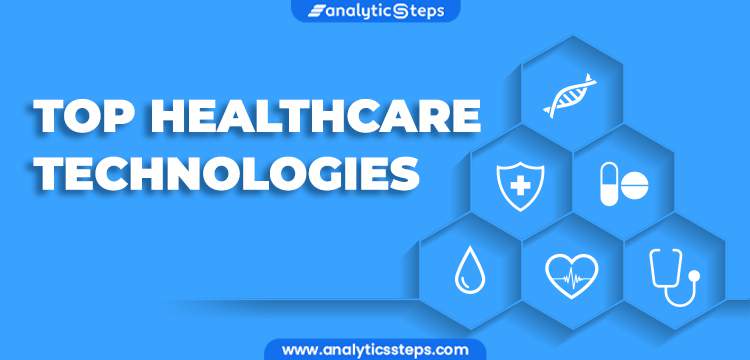The healthcare industry is undergoing rapid transformation, driven by the need to improve operational efficiencies, innovate care delivery models, and address workforce shortages. Healthcare providers across the globe are faced with the challenge of increasing demand for care, mounting workloads, and economic pressures. Additionally, there is a growing recognition of the need to improve healthcare equality and reduce the sector’s carbon footprint for the preservation of the planet’s health. In this article, we will explore 10 healthcare technology trends that are expected to gain further traction in 2023, addressing these challenges and ambitions.

Addressing Workforce Shortages with Automation and AI
One of the most pressing concerns for healthcare leaders is the shortage of staff. Burnout and staffing shortages can weaken healthcare systems, leading to reduced efficacy and compromised patient care. For example, studies have shown that radiologists in the US experience chronic work-related exhaustion and reduced effectiveness. Similarly, there is an estimated global shortfall of 13 million nurses by 2030. To tackle these workforce challenges, healthcare providers are turning to automation and artificial intelligence (AI) to increase efficiencies and augment the capabilities of staff.
Automation, enabled by AI, can significantly improve productivity and workflow in various healthcare settings. In radiology, AI-powered healthcare technology can enable faster scan times with higher resolution in imaging modalities like MR, even with patients who are in pain or struggle to hold their breath during an exam. This allows radiology departments to scan more patients in a day while supporting diagnostic confidence and improving the patient experience.
AI can also enhance productivity and reduce intra-user variability in ultrasound use by providing automatic measurements, saving healthcare professionals from tedious manual work and allowing them to focus on diagnostic decision-making. Automation can also help reduce the burden of repetitive administrative tasks for physicians, nurses, and technologists, allowing them to spend more time with patients.
Digital Upskilling for Continuous Training and Education
In addition to addressing workforce shortages, healthcare professionals need continuous training and education to keep up with technological advances. Many healthcare professionals have left the field since the pandemic began, making it even more critical to train new staff adequately. The years ahead will see a growing demand for “education as a service,” supporting ongoing education and continuous learning as digital transformation in healthcare accelerates.
Blended learning methods will continue to rise in popularity, combining in-person training with self-directed online learning. Healthcare professionals increasingly expect personalized and convenient digital learning experiences, including self-paced tutorials, webinars, gamification, augmented reality, and virtual reality. Hospitals can also appoint “super users” who act as early adopters and ambassadors for new technologies, providing guidance and support to other staff members.
Enabling Remote Operations through Virtual Collaboration
Virtual collaboration has become increasingly important in healthcare, especially as experienced staff members become scarce. Remote guidance from more experienced colleagues can empower less experienced staff in smaller satellite locations. For example, radiology operations command centers connect experienced imaging experts with technologists at peripheral scan locations, enabling virtual over-the-shoulder support during imaging procedures. This model standardizes image quality, maintains operational continuity, and makes advanced imaging accessible at more sites.
Real-time virtual collaboration in ultrasound and tele-ICU programs also extend specialist care to enhance patient and staff experiences, improve workflow efficiencies, and drive better patient outcomes across different locations. These remote collaboration technologies enable healthcare professionals to provide guidance and support in critical care situations, regardless of their physical location.
Vendor-Neutral and Interoperable Informatics Solutions
As healthcare becomes increasingly connected, the need for interoperability between systems and devices becomes crucial. Hospitals often procure equipment and devices from different vendors, resulting in fragmented digital infrastructure and fragmented healthcare experiences. To overcome this fragmentation, there is a growing adoption of vendor-neutral and interoperable informatics solutions.
For example, centralized radiology operations command centers can connect to imaging equipment from multiple vendors, allowing radiology departments to standardize imaging operations across sites. Vendor-neutral data analytics and radiology workflow solutions improve operational performance and reduce costs in radiology departments while supporting continuous optimization. In acute and post-acute care, vendor-neutral medical device integration platforms aggregate and analyze data from connected devices, offering care teams a more holistic picture of each patient’s health condition.
Healthcare’s Move to the Cloud
The adoption of cloud technology is critical for creating connected and integrated IT infrastructures in healthcare. Cloud-based solutions offer scalability and security, allowing healthcare providers to adapt to fluctuating demand without compromising data security. While cloud adoption in healthcare has traditionally lagged behind, recent years have seen fast-growing acceptance and adoption worldwide.
Cloud-based software-as-a-service (SaaS) solutions are becoming prevalent, enabling unified patient views by pulling together data from different hospital systems. These solutions support collaborative decision-making, provide recommendations for specific therapies or clinical trials, and allow for rapid development and testing of new digital applications. Cloud-based solutions also facilitate the sharing of data across care settings, connecting hospitals to the home and the community.
Seamless Patient Monitoring within and beyond Hospital Walls
The further adoption of cloud-based digital solutions in healthcare enables increased data sharing across care settings, paving the way for a more distributed healthcare system. Clinical surveillance technologies provide timely insights into a patient’s status across care settings, helping caregivers proactively address potential adverse events. Remote patient monitoring, which experienced exponential growth during the pandemic, allows for continuous monitoring of patients outside of the hospital.
For example, wearable patches can detect heart rhythm irregularities in stroke patients, enabling early intervention and preventing repeat strokes. Cloud-based AI can analyze data from millions of ECG recordings, aiding in the detection of heart rhythm disturbances. Ambulatory cardiac monitoring supports improved patient outcomes and cost savings by monitoring for arrhythmic disturbances following cardiac procedures. These technologies enable care teams to offer the right care in the right place at the right time, supporting a seamless patient experience.
Equitable and Inclusive Healthcare Delivery
The COVID-19 pandemic has highlighted existing health disparities and the need for equitable and inclusive healthcare delivery. Vulnerable populations have been disproportionately affected, exacerbating global health gaps. There is a growing call to respond to systemic inequalities and improve healthcare equality.
Emerging technologies, such as remote high-risk pregnancy monitoring and mobile ultrasound with AI support, hold promise for closing care gaps in maternal and child health. Mobile screening solutions can detect life-threatening diseases in people who may not have had access to traditional healthcare services. Socially conscious companies can play a significant role in building more equitable health systems by innovating and financing healthcare projects in low-resource settings.
Circularity as a Climate Action Strategy
The healthcare industry’s carbon footprint is a significant concern, with healthcare systems accounting for a significant portion of global CO₂ emissions. Sustainability-minded health leaders are turning to healthcare technology to break out of this destructive cycle. Circular practices, such as closing the loop on hardware and adopting smart digital tools, are helping health systems deliver value with minimum resources.
Circular innovation, such as designing for refurbishment and upgradability, can reduce the environmental footprint of healthcare organizations while addressing financial constraints. By adopting circular practices, healthcare providers can improve their operational efficiency, reduce waste, and contribute to climate action.
Decarbonizing Healthcare
Healthcare leaders acknowledge the health implications of carbon-driven climate change and are taking action to reduce their carbon footprint. Following science-based targets for emission reduction is a clear trend within the healthcare industry. This entails reducing direct power consumption through energy-efficient healthcare technology and implementing sustainable resource management practices to reduce indirect emissions.
Green procurement criteria and engaging the supply chain are essential steps in achieving decarbonization goals. By incentivizing climate mitigation measures and offering improved payment terms to suppliers, healthcare organizations can drive sustainable change across the value chain.
Understanding the Impact of Environmental Health on Human Health
The impact of environmental factors on human health is increasingly recognized by healthcare professionals. Rising temperatures, CO₂ levels, and extreme weather events have wide-ranging effects on human health outcomes. As a result, health systems are adopting strategies to reduce their environmental footprint and protect ecosystems.
Adopting natural capital accounting and biodiversity preservation practices can support better decision-making in resource management and contribute to climate mitigation efforts. Protecting and restoring natural ecosystems can provide a substantial portion of the CO₂ mitigation needed to combat climate change, while also ensuring a healthy environment for future generations.
Conclusion
The healthcare industry is at the forefront of technological advancements, with healthcare technology trends for 2023 focused on improving efficiency, care delivery, and sustainability. Automation and AI can address workforce shortages, while continuous training and education support digital upskilling. Virtual collaboration enables remote operations, and vendor-neutral informatics solutions ensure seamless data integration. Cloud technology facilitates connected care, and remote patient monitoring extends care beyond hospital walls. Equitable and inclusive healthcare delivery is a priority, alongside circularity and decarbonization efforts. Finally, recognizing the impact of environmental health on human health is crucial for building a sustainable future in healthcare.




No comments! Be the first commenter?